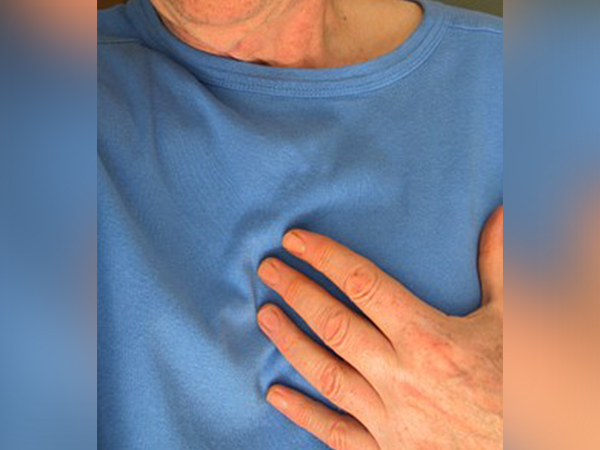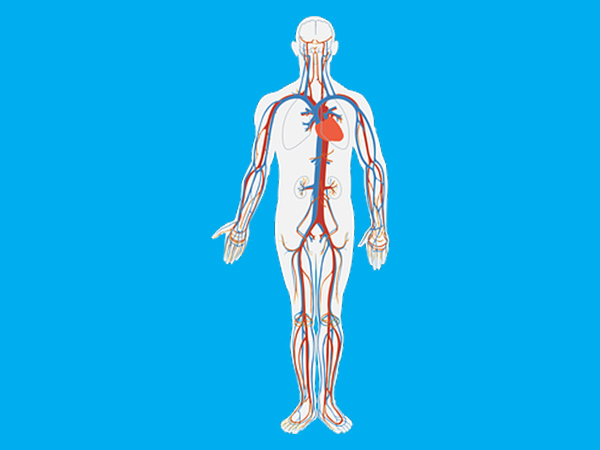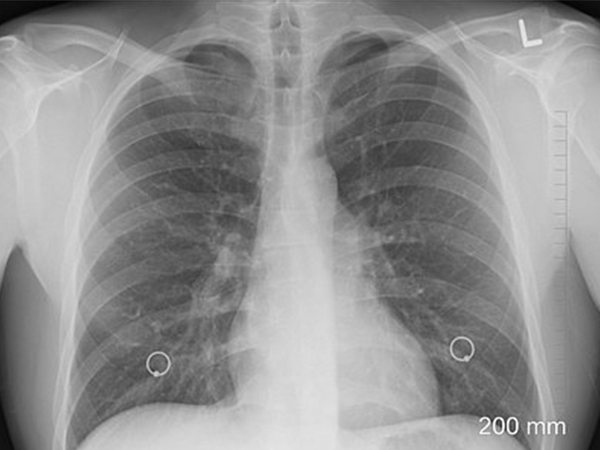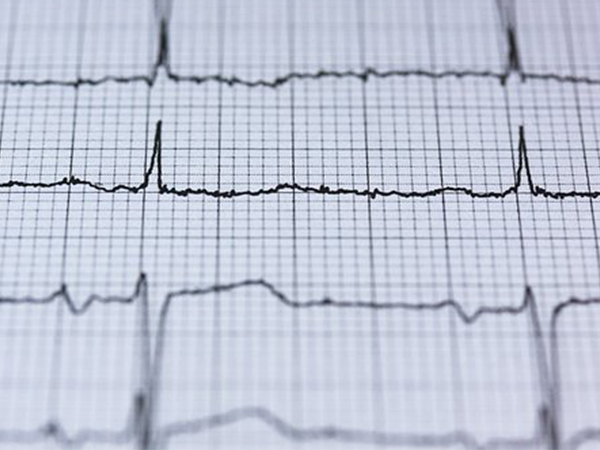Just In
- 2 hrs ago

- 6 hrs ago

- 9 hrs ago

- 11 hrs ago

Don't Miss
- Technology
 Nothing Ear, Ear a With ANC, Up to 42.5 Hours of Battery Launched; Check Price and Availability
Nothing Ear, Ear a With ANC, Up to 42.5 Hours of Battery Launched; Check Price and Availability - Movies
 Anupamaa Twist | Will Yashdeep EXIT Rupali Ganguly’s Show Soon? Vaquar Shaikh REACTS: There Are Times…
Anupamaa Twist | Will Yashdeep EXIT Rupali Ganguly’s Show Soon? Vaquar Shaikh REACTS: There Are Times… - News
 Lok Sabha Pre-Poll Survey: Can Congress Turn The Tables In Haryana? Check This Opinion Poll
Lok Sabha Pre-Poll Survey: Can Congress Turn The Tables In Haryana? Check This Opinion Poll - Sports
 KL Rahul Record vs CSK, Chennai Super Kings Bowlers & Stats At Ekana Stadium Ahead Of IPL 2024 Match 34
KL Rahul Record vs CSK, Chennai Super Kings Bowlers & Stats At Ekana Stadium Ahead Of IPL 2024 Match 34 - Education
 PSEB Class 10 Toppers' List 2024, Check the Ranks of Toppers
PSEB Class 10 Toppers' List 2024, Check the Ranks of Toppers - Automobiles
 All About Electronic Stability Control ESC: Working & Advantages
All About Electronic Stability Control ESC: Working & Advantages - Finance
 Tata Motors To Utilize New $1 Billion TN Plant For Jaguar Land Rover Cars
Tata Motors To Utilize New $1 Billion TN Plant For Jaguar Land Rover Cars - Travel
Telangana's Waterfall: A Serene Escape Into Nature's Marvels
Pericarditis: Causes, Symptoms, Diagnosis And Treatment
Pericardium consists of two thin layers of a sac-like tissue that surround the heart and hold it in place and help it work normally [1] . Presence of a small amount of fluid ensures that the layers are kept separated such that there is no friction between them. Inflammation of the pericardium is known as pericarditis [2] . The most common symptom of this illness is chest pain. Severe pain occurs when the sac's layers become inflamed and rub against the heart. It is almost similar to the pain that is caused by a heart attack.

Read on to know more about pericarditis, its symptoms, diagnosis and treatment.
What Is Pericarditis?
Also known as pericardial disease, pericarditis is the inflammation of the layers of the pericardium [2] . The pericardium consists of the following [1] :
- Visceral pericardium: This is the inner layer that envelopes the entire heart.
- A middle fluid layer: This prevents friction between the visceral pericardium and parietal pericardium.
- Parietal pericardium: This is an outer layer that is made up of fibrous tissue.
Pericarditis can be acute (it happens suddenly and does not usually last long). When the condition is chronic, it develops over time and may take a long time to be treated [3] . This illness can disrupt the normal rhythm and functionality of the heart. In some rare cases, pericarditis can lead to death.
Causes Of Pericarditis
Although viral infections are considered to be the prime cause of pericarditis, its real cause is yet to be confirmed. This illness mostly occurs after a respiratory infection. Autoimmune disorders such as lupus, scleroderma and rheumatoid arthritis usually cause chronic pericarditis. Other possible causes of pericarditis are as follows [4] :
- Kidney failure, cancer, tuberculosis and HIV/AIDS
- Heart attack and heart surgery
- Injuries from accidents
- Radiation therapy
- Use of certain medicines such as warfarin, heparin, phenytoin and procainamide
- Underactive thyroid
When pericarditis occurs weeks after a heart attack or surgery, it is known as Dressler's syndrome [5] . In such cases, the cause is usually autoimmune.
Symptoms Of Pericarditis
The symptoms of pericarditis include the following [6] :
- Minor fever
- Sharp pain in the chest
- Palpitations
- General weakness
- Shortness of breath
- Cough
- Pain in the shoulder
- Swelling of the abdomen or legs

As the symptoms are quite similar to that of a heart attack, it is important to seek medical attention as soon as you experience abnormal chest pain.
Complications Of Pericarditis
The complications of this illness include the following:
- Constrictive pericarditis [7] : Some people with this condition, usually the ones with chronic recurrences, can develop permanent thickening and contraction of the pericardium. The pericardium loses elasticity and this condition leads to severe swelling of the legs and abdomen.
- Cardiac tamponade [8] : When there is too much fluid in the pericardium, a condition called cardiac tamponade can develop. The excess amount of fluid puts pressure on the heart and prevents it from functioning properly. If not treated immediately, it can lead to death.
Diagnosis Of Pericarditis
When the pericardial layers rub together, they make a distinctive sound. Hence, when diagnosing, your doctor would first listen to your chest. The following diagnostic tools are used for further assessment [9] :
- Chest X-ray: This is used to check if the heart has enlarged due to excess fluid.

- CT: A detailed image of the heart can be used to rule out possible problems such as pulmonary clots and aortic tears.
- MRI of the heart: This is done to obtain an accurate picture of the width of the heart walls.
- Echocardiogram: A detailed image of the heart is obtained using sound waves.
- Electrocardiogram (ECG): Electrical activity of the heart is measured using patches and wires.

Treatment For Pericarditis
The severity and the underlying cause of this illness determine how the treatment procedure should be. The first line of treatment is usually medication.
Drug-based treatment options include the following [10] :
- Over-the-counter pain medicine: Medicines such as aspirin can be used to ease pain and inflammation.
- Colchicine: This drug has anti-inflammatory properties and hence, can minimize the duration and prevent a recurrence [11] . However, there could be certain side effects such as vomiting, abdominal pain and diarrhoea.
- Corticosteroids: In an extreme situation, corticosteroids can be tried [12] . However, it should be noted that if steroids are given during the first attack of pericarditis, the person might experience a relapse soon.
Other treatment procedures include the following:
- Pericardiocentesis: The excess fluid is drained by inserting a small tube into the pericardial cavity [13] . The tube can be left inserted for several days.
- Pericardiectomy: In case the pericardium becomes excessively rigid, then the entire sac might need to be surgically removed [14] . However, this surgery is the last option as it can get risky.

Who Are At Risk For Pericarditis?
This illness can affect people of all ages. However, it is mostly seen in men between 20 to 50 years of age. Also, people who get treated for acute pericarditis hold a high chance of experiencing this condition again. A small percentage of these people can also develop chronic pericarditis.
Prevention Of Pericarditis
Although acute pericarditis cannot be prevented, one can take steps to reduce the chance of having another acute episode. Prompt treatment after the first episode of acute pericarditis can prevent the occurrence of complication or turning chronic. Routine medical care and following the treatment plan rigorously is essential for the overall wellness.
- [1] Jaworska-Wilczynska, M., Trzaskoma, P., Szczepankiewicz, A. A., & Hryniewiecki, T. (2016). Pericardium: structure and function in health and disease.Folia histochemica et cytobiologica,54(3), 121-125.
- [2] Khandaker, M. H., Espinosa, R. E., Nishimura, R. A., Sinak, L. J., Hayes, S. N., Melduni, R. M., & Oh, J. K. (2010). Pericardial disease: diagnosis and management.Mayo Clinic proceedings,85(6), 572–593.
- [3] Troughton, R. W., Asher, C. R., & Klein, A. L. (2004). Pericarditis.The Lancet,363(9410), 717-727.
- [4] Woodward, T. E., Mccrumb, F. R., Carey, T. N., & Togo, Y. (1960). Viral and rickettsial causes of cardiac disease, including the Coxsackie virus etiology of pericarditis and myocarditis.Annals of internal medicine,53(6), 1130-1150.
- [5] Lichstein, E., Arsura, E., Hollande, G., Greengart, A., & Sanders, M. (1982). Current incidence of postmyocardial infarction (Dressler's) syndrome.The American journal of cardiology,50(6), 1269-1271.
- [6] Troughton, R. W., Asher, C. R., & Klein, A. L. (2004). Pericarditis.The Lancet,363(9410), 717-727.
- [7] Talreja, D. R., Edwards, W. D., Danielson, G. K., Schaff, H. V., Tajik, A. J., Tazelaar, H. D., ... & Oh, J. K. (2003). Constrictive pericarditis in 26 patients with histologically normal pericardial thickness.Circulation,108(15), 1852-1857.
- [8] Spodick, D. H. (2003). Acute cardiac tamponade.New England Journal of Medicine,349(7), 684-690.
- [9] Lange, R. A., & Hillis, L. D. (2004). Acute pericarditis.New England Journal of Medicine,351(21), 2195-2202.
- [10] Imazio, M., Gaita, F., & LeWinter, M. (2015). Evaluation and treatment of pericarditis: a systematic review.Jama,314(14), 1498-1506.
- [11] Leung, Y. Y., Yao Hui, L. L., & Kraus, V. B. (2015). Colchicine--Update on mechanisms of action and therapeutic uses.Seminars in arthritis and rheumatism,45(3), 341–350.
- [12] Ramamoorthy, S., & Cidlowski, J. A. (2016). Corticosteroids: Mechanisms of Action in Health and Disease.Rheumatic diseases clinics of North America,42(1), 15–vii.
- [13] Kumar, R., Sinha, A., Lin, M. J., Uchino, R., Butryn, T., O'Mara, M. S., … Stawicki, S. P. (2015). Complications of pericardiocentesis: A clinical synopsis.International journal of critical illness and injury science,5(3), 206–212.
- [14] Mo, A., & Yang, X. (). Pericardiectomy for a patient with constrictive pericarditis and multivessel coronary artery disease.International journal of surgery case reports,49, 231–234.
-
 healthTV Actor Rituraj Singh Dies Of Cardiac Arrest: Causes And Symptoms, How It Is Different From Heart Attack
healthTV Actor Rituraj Singh Dies Of Cardiac Arrest: Causes And Symptoms, How It Is Different From Heart Attack -
 healthHow A Heartbreak Can Affect Your Brain And Ways To Overcome And Heal It Post Breakup
healthHow A Heartbreak Can Affect Your Brain And Ways To Overcome And Heal It Post Breakup -
 insyncValentine's Day 2024: Is Origin Of Heart Symbol Associated With A Plant Seed? Here's What You Need To Know
insyncValentine's Day 2024: Is Origin Of Heart Symbol Associated With A Plant Seed? Here's What You Need To Know -
 healthWorld Heart Day 2023: 5 Benefits Of Eating Chicken Hearts For Heart Patients
healthWorld Heart Day 2023: 5 Benefits Of Eating Chicken Hearts For Heart Patients -
 healthGain Control of Your Stress and Guard Your Heart!
healthGain Control of Your Stress and Guard Your Heart! -
 healthIndian Women's Silent Battle with Cardiac Health
healthIndian Women's Silent Battle with Cardiac Health -
 healthHeart Health: Which Exercise Is Best To Reduce Stroke Risk?
healthHeart Health: Which Exercise Is Best To Reduce Stroke Risk? -
 healthBoost Your Heart Health With These Five Exercises
healthBoost Your Heart Health With These Five Exercises -
 pregnancy parentingBipasha Basu Talks About Daughter Devi's Open Heart Surgery: When Do Infants Need A Heart Surgery?
pregnancy parentingBipasha Basu Talks About Daughter Devi's Open Heart Surgery: When Do Infants Need A Heart Surgery? -
 healthHeart-Healthy Breakfast: Discover The Benefits Of Frozen Strawberries
healthHeart-Healthy Breakfast: Discover The Benefits Of Frozen Strawberries -
 healthEmerging Role Of Wearable Technology In Cardiovascular Disease Prevention And Management
healthEmerging Role Of Wearable Technology In Cardiovascular Disease Prevention And Management -
 healthExpert Article: How To Identify If Arrhythmias Are Life-threatening?
healthExpert Article: How To Identify If Arrhythmias Are Life-threatening?


 Click it and Unblock the Notifications
Click it and Unblock the Notifications



